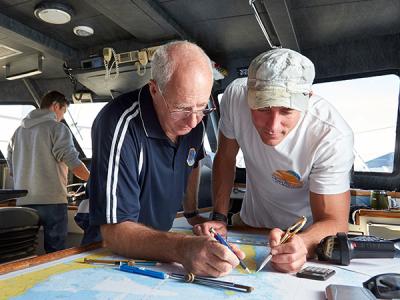
This qualification is aligned to the educational requirement for Certification as Marine Engine Driver (Motor) Grade 1 as described in Part D of the National Standards for Commercial Vessels (NSCV). This will allow you to take charge on vessels less than 525kw (35QN) propulsion power engaged in operations in any area; or750kw (50QN) propulsion power engaged in operations up to Australian Coastal - Middle Water Limits (600nm); or 1,500kw propulsion power engaged in operations up to Inshore limits (15nm).
You could also be second-in-charge of machinery on vessels less than 525kw (35QN) propulsion power engaged in Australian Coastal–Middle Water Limits (600nm); 750kw (50QN) propulsion power engaged in operations up to Australian Coastal — Middle Water Limits (600nm); 1,500kw propulsion power engaged in operations up to Offshore Limits (600nm); or 1,500kw propulsion power.
Choose a WA TAFE college that delivers this course
To find out more about doing this course at a WA TAFE college, select one of the TAFEs listed below to read their course descriptions. You'll also be able to see at which TAFE campus/es the course is delivered.
If you would like further information such as when the course is available and how to enrol, and details of course fees, or if you have questions about how the course is delivered, please follow the Find out more link to go to the TAFE's website where you will find full course details and contact information so that you can speak to the TAFE directly.
Set yourself up for a career on the sea.
This qualification is suitable for people who work in the maritime industry, as Chief Engineer on vessels with propulsion power up to 1500 kW and Second Engineer on vessels with propulsion power up to 3000 kW in the exclusive economic zone (EEZ)
Students will develop the following skills:
- Apply safety procedures
- Apply survival skills at sea
- Operate and maintain electrical systems
- Perform engineering calculations
- Manage fuel systems and refuelling
- Basic welding, brazing, cutting and machining operations
- Operate and maintain internal combustion engines, propulsion plant and auxiliary power systems
This qualification is aligned to the educational requirement for Certification as Marine Engine Driver (Motor) Grade 1 as described in Part D of the National Standards for Commercial Vessels (NSCV). The Marine Engine Driver (Motor) Grade 1 Certificate of Competency (CoC) is issued by the appropriate maritime regulatory authority in each state and territory.
A Marine Engine Driver (Motor) Grade 1 Certificate allows a holder to take charge of the machinery on vessels less than:
- 525kw (35QN) propulsion power engaged in operations in any area; or750kw (50QN) propulsion power engaged in operations up to Australian Coastal - Middle Water Limits (600nm), or
- 1500kw propulsion power engaged in operations up to Inshore limits (15nm).
This certificate also allows the holder to be second-in-charge of machinery on vessels less than:
- 525kw (35QN) propulsion power engaged in Australian Coastal - Middle Water Limits (600nm)
- 750kw (50QN) propulsion power engaged in operations up to Australian Coastal - Middle Water Limits (600nm)
- 1500kw propulsion power engaged in operations up to Offshore Limits (600nm); or
- 1500kw propulsion power
Study in specialist facilities
Situated in the port city of Fremantle, SM TAFE’s Fremantle campus includes some of the most comprehensive facilities for maritime training in the country, with advanced training equipment and highly experienced and qualified lecturing staff. The SM TAFE maritime training integrates simulator technology, a fleet of three vessels, biological and computing laboratories, along with engineering, seamanship and aquaculture workshops.
You can learn real-world skills in the ship, bridge and engineering simulator training suite and become job-ready for your role. The technology used features the most advanced mathematical modelling and shipping databases in the world and the hardware replicates the current equipment installed on seagoing ships.
The information presented on the course lists within this website is provided to the Department of Training and Workforce Development by the WA TAFE colleges and private training providers, and is offered as a guide only. It is updated regularly, however some changes to details may occur in between updates. You should always contact the TAFE or private training provider directly to confirm details and/or ask questions.


